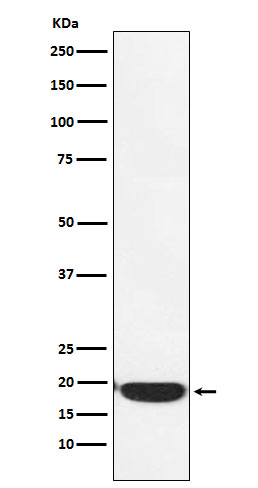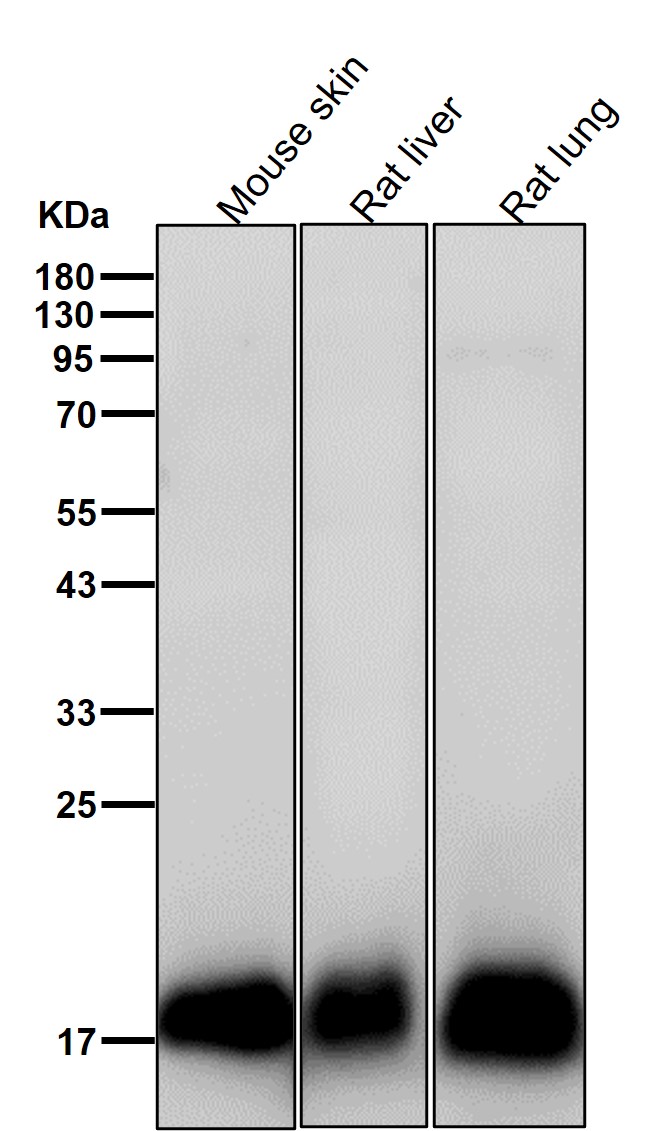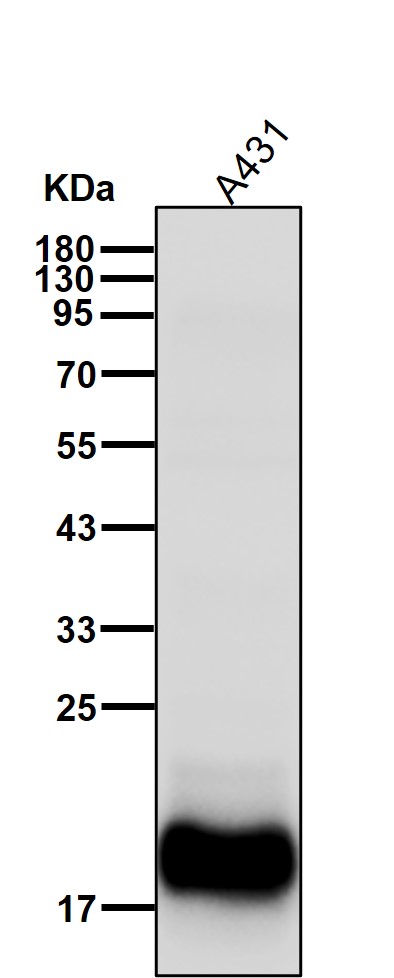


| WB | 1/1000-1/2000 | Human,Mouse,Rat |
| IF | 咨询技术 | Human,Mouse,Rat |
| IHC | 咨询技术 | Human,Mouse,Rat |
| ICC | 1/50-1/200 | Human,Mouse,Rat |
| FCM | 咨询技术 | Human,Mouse,Rat |
| Elisa | 咨询技术 | Human,Mouse,Rat |
| Aliases | KCP1; KRTCAP1; Perp; PIGPC1; THW;;PERP |
| WB Predicted band size | 21 kDa |
| Host/Isotype | Rabbit IgG |
| Antibody Type | Primary antibody |
| Storage | Store at 4°C short term. Aliquot and store at -20°C long term. Avoid freeze/thaw cycles. |
| Species Reactivity | Human,Mouse,Rat |
| Immunogen | A synthesized peptide derived from human PERP |
| Formulation | Purified antibody in PBS with 0.05% sodium azide,0.05% BSA and 50% glycerol. |
+ +
以下是关于PERP抗体的3篇代表性文献,格式符合要求:
1. **文献名称**:*PERP, an apoptosis-associated target of p53. is a novel member of the PMP-22/gas3 family*
**作者**:Attardi LD et al.
**摘要**:本研究首次鉴定PERP为p53依赖性凋亡的关键效应分子,属于PMP-22/gas3跨膜蛋白家族。通过生成特异性PERP抗体,证实其在DNA损伤后诱导细胞凋亡中的作用,并揭示其与细胞连接结构的关联。
2. **文献名称**:*Role of the p53 homolog p63 in sustaining epidermal stem cell survival*
**作者**:Nguyen BC et al.
**摘要**:利用PERP抗体进行免疫组化分析,发现p63通过调控PERP表达维持表皮干细胞存活。PERP缺失导致细胞间连接破坏,提示其在组织屏障功能中的关键作用,为皮肤疾病研究提供新靶点。
3. **文献名称**:*PERP expression stabilizes intestinal stem cell identity*
**作者**:Maruthappu T et al.
**摘要**:通过Western blot和免疫荧光技术,证明PERP抗体可特异性检测肠道干细胞中该蛋白的表达。研究发现PERP通过维持E-cadherin介导的细胞黏附,阻止干细胞去分化,其表达水平与结直肠癌预后显著相关。
注:PERP(TP53 apoptosis effector)相关研究多聚焦于其p53依赖性凋亡机制及上皮组织稳态调控,上述文献均涉及特异性抗体的实验验证。如需扩展,可补充头颈鳞癌中PERP抗体用于预后评估的研究(如:Kearney CJ et al., 2014)。
PERP (p53 effector related to PMP-22) is a transmembrane protein encoded by the *TP53* gene pathway, initially identified as a critical mediator of p53-dependent apoptosis. Discovered in the early 2000s, PERP plays dual roles in cell death and cell-cell adhesion, particularly in epithelial tissues. Its expression is tightly regulated by the tumor suppressor p53. which activates PERP during DNA damage or oncogenic stress to induce caspase-dependent apoptosis. Beyond apoptosis, PERP contributes to maintaining tissue integrity by stabilizing desmosomes, specialized adhesion structures essential for epithelial sheet formation and mechanical resilience.
PERP antibodies are essential tools for studying its expression, localization, and function in both physiological and pathological contexts. Researchers use these antibodies in techniques like Western blotting, immunohistochemistry, and immunofluorescence to explore PERP's role in cancer, where its loss or downregulation is linked to tumor progression, metastasis, and poor prognosis in cancers such as squamous cell carcinoma and breast cancer. Additionally, PERP antibodies aid in investigating developmental processes, as PERP knockout mice exhibit defects in skin and heart development. The antibody's specificity and reliability are critical for distinguishing PERP from structurally related proteins (e.g., PMP-22) and validating its involvement in p53-mediated stress responses or epithelial disorders.
×